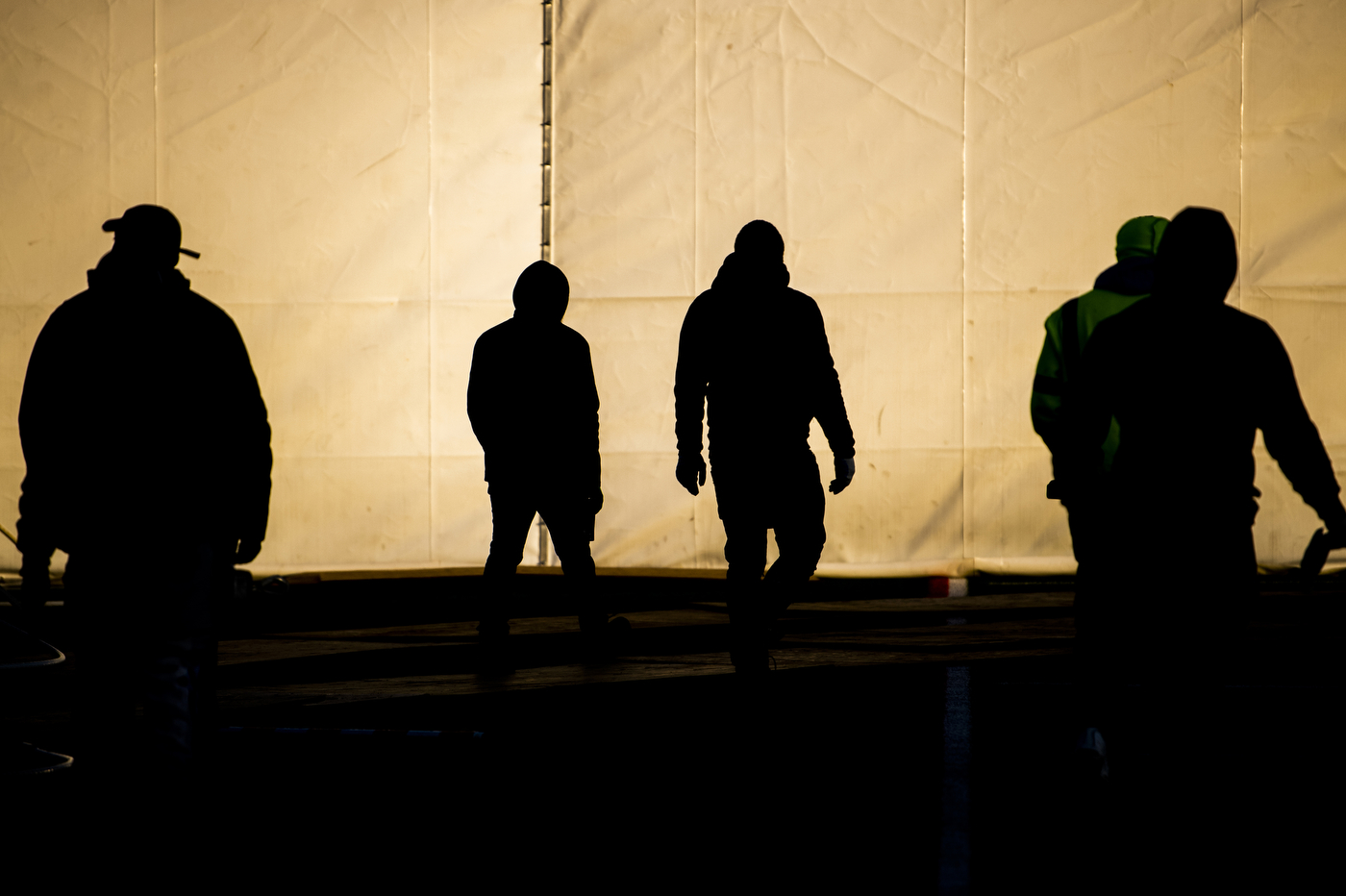Spring is in the air, as there goes the bubble

“There it is,” said David Frazier, Northeastern’s senior director of athletic facilities and central event services.
He was referring to the absence of sound. The power had been shut down, the 10 doors were being opened, and the bright white athletic bubble—a staple of the Northeastern winter—was already beginning to deflate. Its annual removal marks a changing of the seasons, a tradition just three years old.
It was 6:42 a.m. on Tuesday. The Boston campus was mostly asleep. Within the hour, as students, faculty and staff passed by Carter Playground on Columbus Avenue, they would find the 72-foot-high bubble laying flat on the ground like a collapsed dirigible.


Since January, the bubble opened daily at 6 a.m. and closed at midnight. During those 18 hours per day, it was in use far more often than not by the university community as well as by a variety of youth teams and other users affiliated with the city of Boston.
Northeastern oversees the bubble as part of its Carter Playground partnership with the city. Every four hours throughout the winter, Frazier’s team had monitored the pressure within the dome—especially on days of heavy snow or rain, which could cause the roof to sag. If enough snow gathered on top, the air pressure was increased to steepen the roof and the heat was turned up to hasten melting.

“This has been a great resource for the university and the city,” Frazier said. “It’s used pretty much all the time. The city sets a limit of 149 people at one time. You look at this big space and say, ‘Wow, that’s not that many.’ But it’s all about safety and egress, making sure the experience is good for everybody, and that we don’t overcrowd it.”
Frazier was hoping to remove the bubble before Sunday afternoon, when the Northeastern men’s lacrosse team plays host to Georgia Tech on the Carter field. The original plan of bringing it down on Monday was postponed because of blustery conditions that might have ripped the deflated roof loose from the foundation and sent it flying.
Tuesday morning arrived with negligible winds of less than 5 mph, according to an anemometer atop a nearby lightpost, and no threat of rain. The eight sections of synthetic fabric, each thickened to a weight of 8,000 pounds, must be dry before being rolled up and put into storage in suburban Boston until next winter.
A large crew met at sunrise to oversee the dismantling—electricians, mechanical engineers, local laborers, contractors, fire safety personnel, a city of Boston liaison, and a Northeastern team that included athletic facilities operational engineer Chris Dintino. ”Our technical guru,” said Frazier.




As the air hissed out through the doors, the bubble instantly began to sag over the edges of its foundation, like those few extra pounds of weight drooping over your belt. Inside, the dome was dark and unusually quiet, now that its fan was no longer keeping the space pressurized.

Workers circulated the edges of the bubble, loosening the 30 steel cables that keep it anchored. Each cable—up to 400 feet long and weighing 3,000 pounds—would be rolled up and stored in large, reinforced boxes.
Frazier took an elevator to the roof of the Columbus Garage next door to watch the well-orchestrated dismantling. The roof’s midsection dipped first; while the end zones were still deflating, workers were already treading across the flattened white sections, removing more than 10,000 nuts and bolts that knitted them together.
By Tuesday afternoon, the crews were extending and rolling up the last of those sections. Spring was already 17 days old, but as the sun shone upon the green fields it felt very much like the first day.
For media inquiries, please contact media@northeastern.edu.










